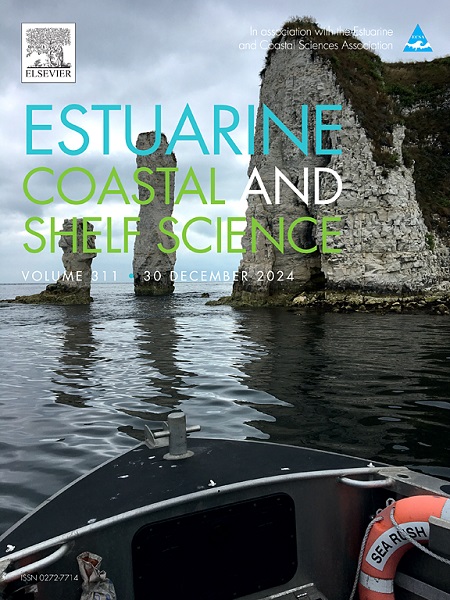Settlement and recruitment of Ostrea edulis and Magallana gigas on the Swedish coast: spatial variability, temporal consistency and species-specific responses
IF 2.6
3区 地球科学
Q1 MARINE & FRESHWATER BIOLOGY
引用次数: 0
Abstract
The European flat oyster, Ostrea edulis, has been subject to extensive protection and restorations measures as it has decline and largely disappeared across Europe. Knowledge on settlement and recruitment of O. edulis in its northern marginal populations are limited and the establishment and spread of invasive the Pacific oyster Magallana (Crassostrea) gigas infers questions about possible interactions. In response to the limited information about settlement patterns and interactions between O. edulis and M. gigas. We tested hypotheses about spatial and temporal patterns in settlement and subsequent recruitment during two successive years using three sets of field experiments based on deployment of seed collectors. Both species showed significant, but unpredictable variability in settlement among sites with prevalence of complex small scale spatial and temporally interactive patterns. Recruitments patterns were in many respects similar to those of the settlement. While M. gigas showed a significantly higher settlement at sites with adult O. edulis, the pattern for O. edulis settlement was not equally linked to the presence of adult oysters. Both settlement and recruitment of O. edulis increased with depth while the opposite was true for M. gigas. Many of the ecological patterns observed were general and predictable, such as the primary settlement period. While the effect of position in the water columns was markedly different between the two species with M. gigas settling closer to water surface. The observed pattern suggests that settlement of O. edulis to some degree are limited by the availability of suitable substrate. Understanding these fundamental spatial and temporal recruitment patterns of the oysters are important for effective management of bivalve and successful implementation of restoration initiatives.
求助全文
约1分钟内获得全文
求助全文
来源期刊
CiteScore
5.60
自引率
7.10%
发文量
374
审稿时长
9 months
期刊介绍:
Estuarine, Coastal and Shelf Science is an international multidisciplinary journal devoted to the analysis of saline water phenomena ranging from the outer edge of the continental shelf to the upper limits of the tidal zone. The journal provides a unique forum, unifying the multidisciplinary approaches to the study of the oceanography of estuaries, coastal zones, and continental shelf seas. It features original research papers, review papers and short communications treating such disciplines as zoology, botany, geology, sedimentology, physical oceanography.

 求助内容:
求助内容: 应助结果提醒方式:
应助结果提醒方式:


